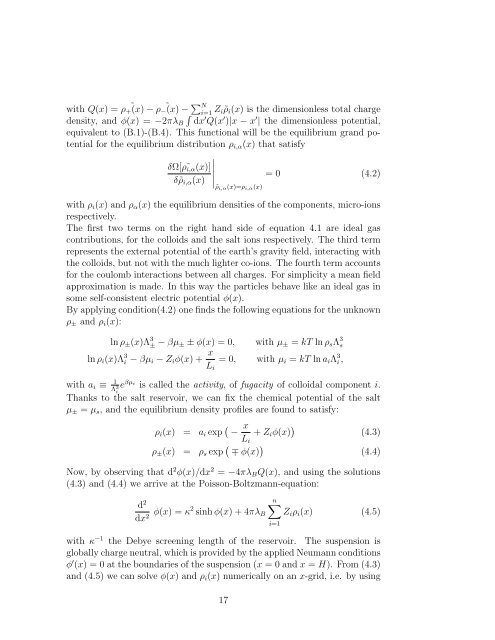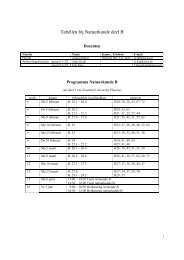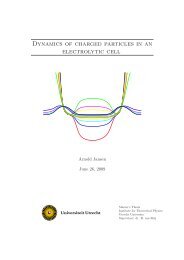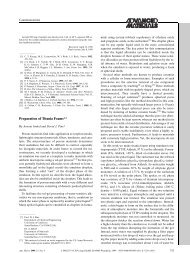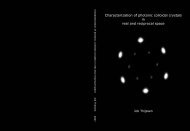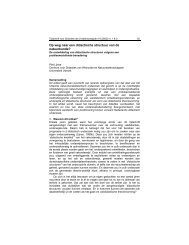Sedimentation Equilibrium of Mixtures of Charged Colloids
Sedimentation Equilibrium of Mixtures of Charged Colloids
Sedimentation Equilibrium of Mixtures of Charged Colloids
Create successful ePaper yourself
Turn your PDF publications into a flip-book with our unique Google optimized e-Paper software.
with Q(x) = ρ ˜ + (x) − ρ ˜ − (x) − ∑ N∫ i=1 Z i ˜ρ i (x) is the dimensionless total chargedensity, and φ(x) = −2πλ B dx ′ Q(x ′ )|x − x ′ | the dimensionless potential,equivalent to (B.1)-(B.4). This functional will be the equilibrium grand potentialfor the equilibrium distribution ρ i,α (x) that satisfyδΩ[ ρ˜i,α (x)]∣= 0 (4.2)δ ˜ρ i,α (x)∣∣˜ρi,α (x)=ρ i,α (x)with ρ i (x) and ρ α (x) the equilibrium densities <strong>of</strong> the components, micro-ionsrespectively.The first two terms on the right hand side <strong>of</strong> equation 4.1 are ideal gascontributions, for the colloids and the salt ions respectively. The third termrepresents the external potential <strong>of</strong> the earth’s gravity field, interacting withthe colloids, but not with the much lighter co-ions. The fourth term accountsfor the coulomb interactions between all charges. For simplicity a mean fieldapproximation is made. In this way the particles behave like an ideal gas insome self-consistent electric potential φ(x).By applying condition(4.2) one finds the following equations for the unknownρ ± and ρ i (x):ln ρ ± (x)Λ 3 ± − βµ ± ± φ(x) = 0,with µ ± = kT ln ρ s Λ 3 sln ρ i (x)Λ 3 i − βµ i − Z i φ(x) + x L i= 0, with µ i = kT ln a i Λ 3 i ,with a i ≡ 1 Λ 3 ie βµ iis called the activity, <strong>of</strong> fugacity <strong>of</strong> colloidal component i.Thanks to the salt reservoir, we can fix the chemical potential <strong>of</strong> the saltµ ± = µ s , and the equilibrium density pr<strong>of</strong>iles are found to satisfy:ρ i (x) = a i exp ( − x L i+ Z i φ(x) ) (4.3)ρ ± (x) = ρ s exp ( ∓ φ(x) ) (4.4)Now, by observing that d 2 φ(x)/dx 2 = −4πλ B Q(x), and using the solutions(4.3) and (4.4) we arrive at the Poisson-Boltzmann-equation:d 2dx 2 φ(x) = κ2 sinh φ(x) + 4πλ Bn∑Z i ρ i (x) (4.5)with κ −1 the Debye screening length <strong>of</strong> the reservoir. The suspension isglobally charge neutral, which is provided by the applied Neumann conditionsφ ′ (x) = 0 at the boundaries <strong>of</strong> the suspension (x = 0 and x = H). From (4.3)and (4.5) we can solve φ(x) and ρ i (x) numerically on an x-grid, i.e. by using17i=1


